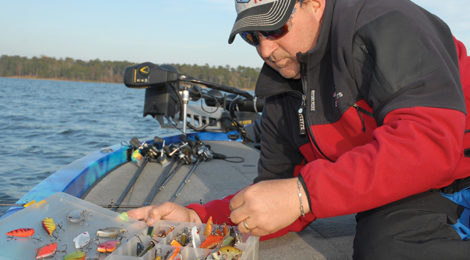
The Color Code
Learn the forage in lakes, match the hatch and focus more on putting baits where fish live.
Story and Photography by Matt Williams
Few topics in bass fishing tend to muddle the water with bass anglers more than color does. Some might believe their bait stash won’t be complete unless it includes every color under the sun. Admittedly, I used to be one of those guys whose tackle store adventures rarely ended painlessly. Rather than sticking with what I already knew would work, I would invariably get sucked in by all the eye candy and walk out with a few lures or plastics that never added up to much more than just looking pretty.
Years spent fishing along with countless conservations with some of saltiest bass pros on the planet finally changed all that. Translation: Stick with the basics and you’ll catch more bass. It’s just that simple.
Perhaps Bass Pro Tour ace Mark Rose of West Memphis, Ark., summarized it best.
Rose has never been one to get sucked in by the color vacuum, particularly when it comes to soft plastics like creatures, worms, lizards, stick baits and swim baits. Instead, he sticks with what he is comfortable with and what experience has taught him.
“Choosing soft plastic colors can confuse you if you allow it to,” Rose said. “There are a ton of different colors under the rainbow, but you don’t need them all to catch bass. The flip side to that is I definitely think color matters. I don’t think you can use one color to suffice for everything, but you definitely don’t need them all.”
The same is true of other styles baits like crankbaits, topwaters, spinnerbaits, swim baits and frogs. While there is no single color that will work best in every situation, there are typically a handful that will work better than others most of the time and a whole bunch that may rarely work at all.
Crankbaits and topwaters are a good example. There are plenty of eye catchers out there that catch more fishermen than fish.








